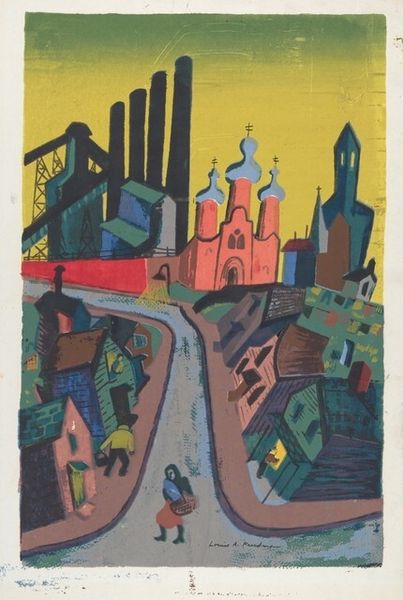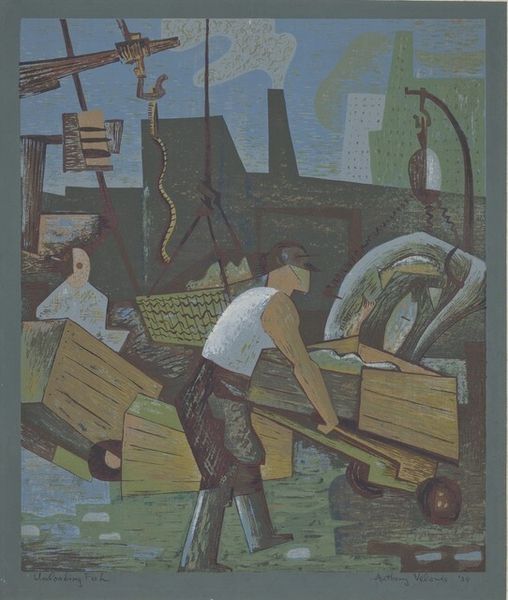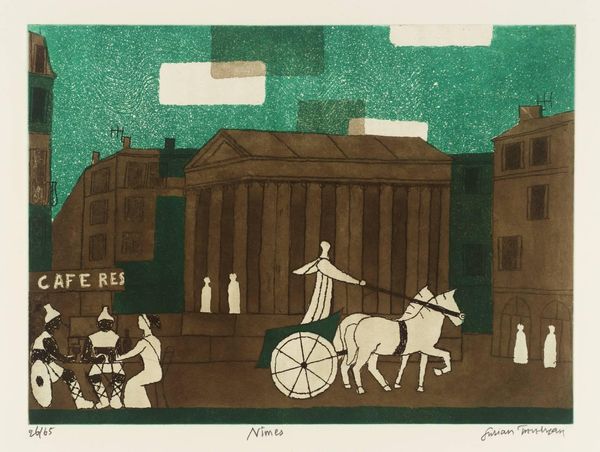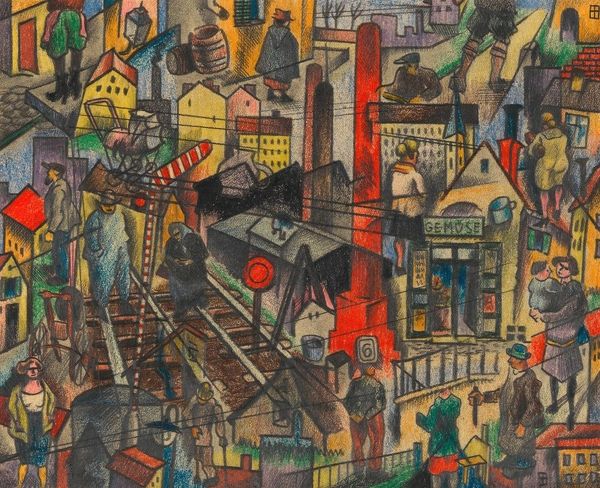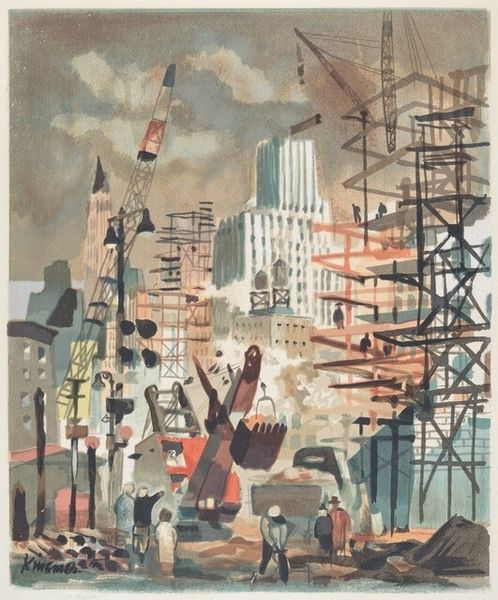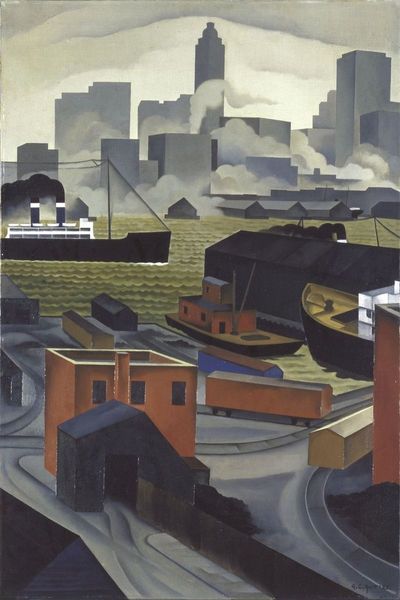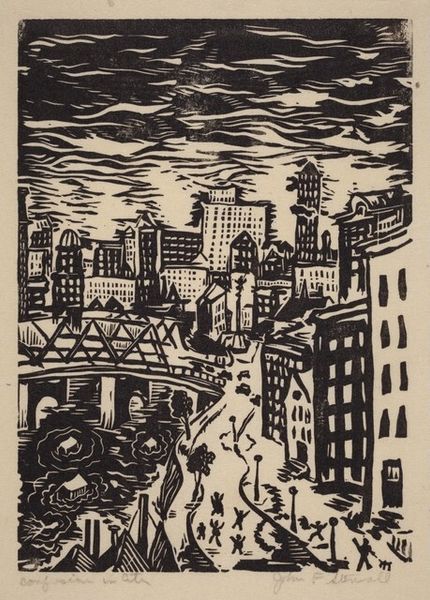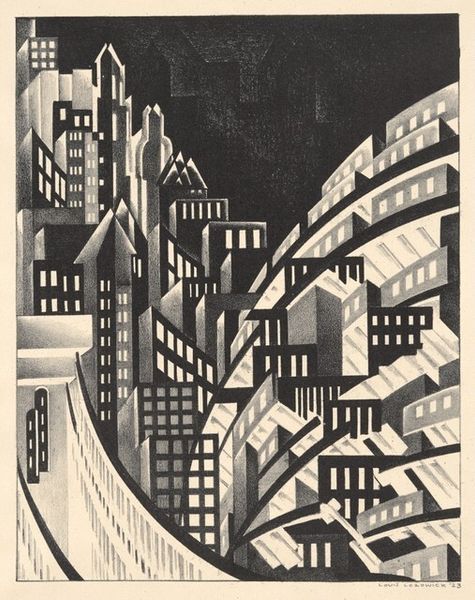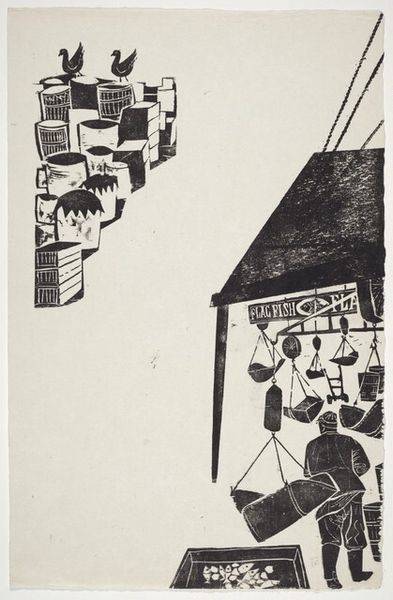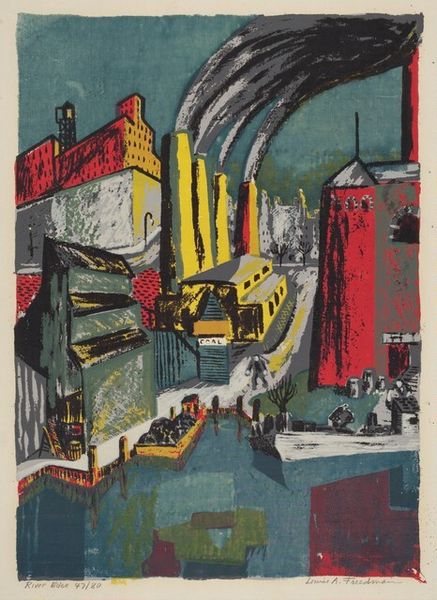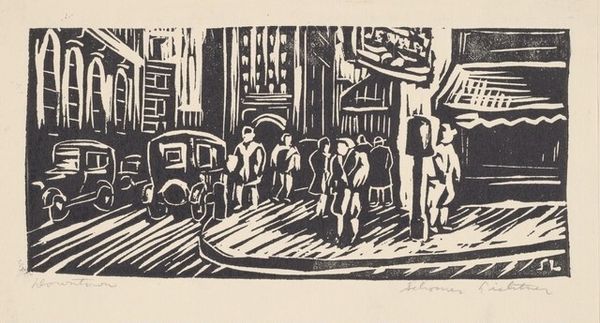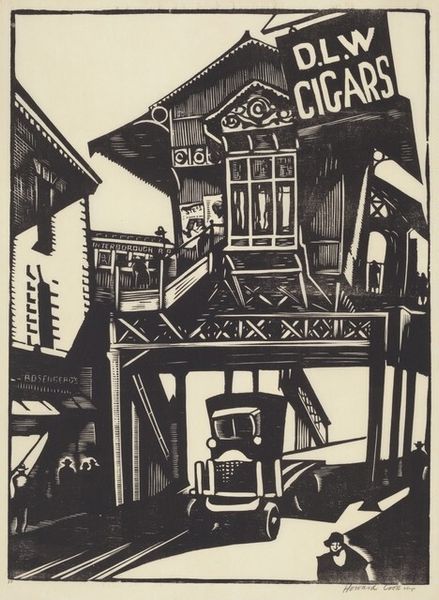
#
cubism
#
street-art
# print
#
geometric
#
cityscape
#
modernism
Dimensions: Image: 345 x 255 mm Sheet: 448 x 319 mm
Copyright: National Gallery of Art: CC0 1.0
Curator: Let’s have a look at “Red Hot Franks,” a 1938 print by Leon Bibel. The buildings have this fantastic way of rising up, jagged, almost like they're competing for space above the vendor. Editor: I get this feeling like the world is closing in on this vendor. It's kind of somber. Like he's just one cog in this great machine, dwarfed by the geometric shapes surrounding him. Even his wagon looks precarious. Curator: Interesting. It’s made using linocut, and the print’s bold lines are really striking. Bibel has played with the geometry, simplified the cityscape into these angular, stacked blocks that are evocative of urban sprawl, right? You almost miss that a person—an entrepreneur—is the primary focus of this visual space. Editor: Yes, the blocks really amplify this vision. And thinking about the choice of material, a linocut implies a process of carving, right? Cutting away. This act of reductive sculpting fits nicely into a Modernist idiom that often championed a ‘truth to materials,’ a working class authenticity of production. Curator: Authenticity…in a depiction of something as mass-produced as a hot dog? I love it. Maybe there's some hidden truth in plain sight here. Those geometric buildings...I wonder if they're not also some abstracted portrait of community – the hot dog’s customers and beneficiaries? The guy might be an important element in their landscape, and vice-versa. Editor: Right, consider what went into making and maintaining this business. His daily routine, the maintenance on his wagon, how and where his supplies come from – these material elements show us a whole social framework beyond just "high art". It's humble stuff that points us to broader labor concerns. Curator: Absolutely. When you really dig into the details, those individual red hot franks begin to multiply in our mind into who bought and consumed the material elements. And then all of a sudden that seemingly gloomy landscape changes into a landscape that supports the people. Thanks for making that clearer for me. Editor: And thank you. When we let ourselves really look at how these things get made, a print about lunch ends up revealing some interesting aspects about our economy, or at least of 1930s life.
Comments
No comments
Be the first to comment and join the conversation on the ultimate creative platform.
